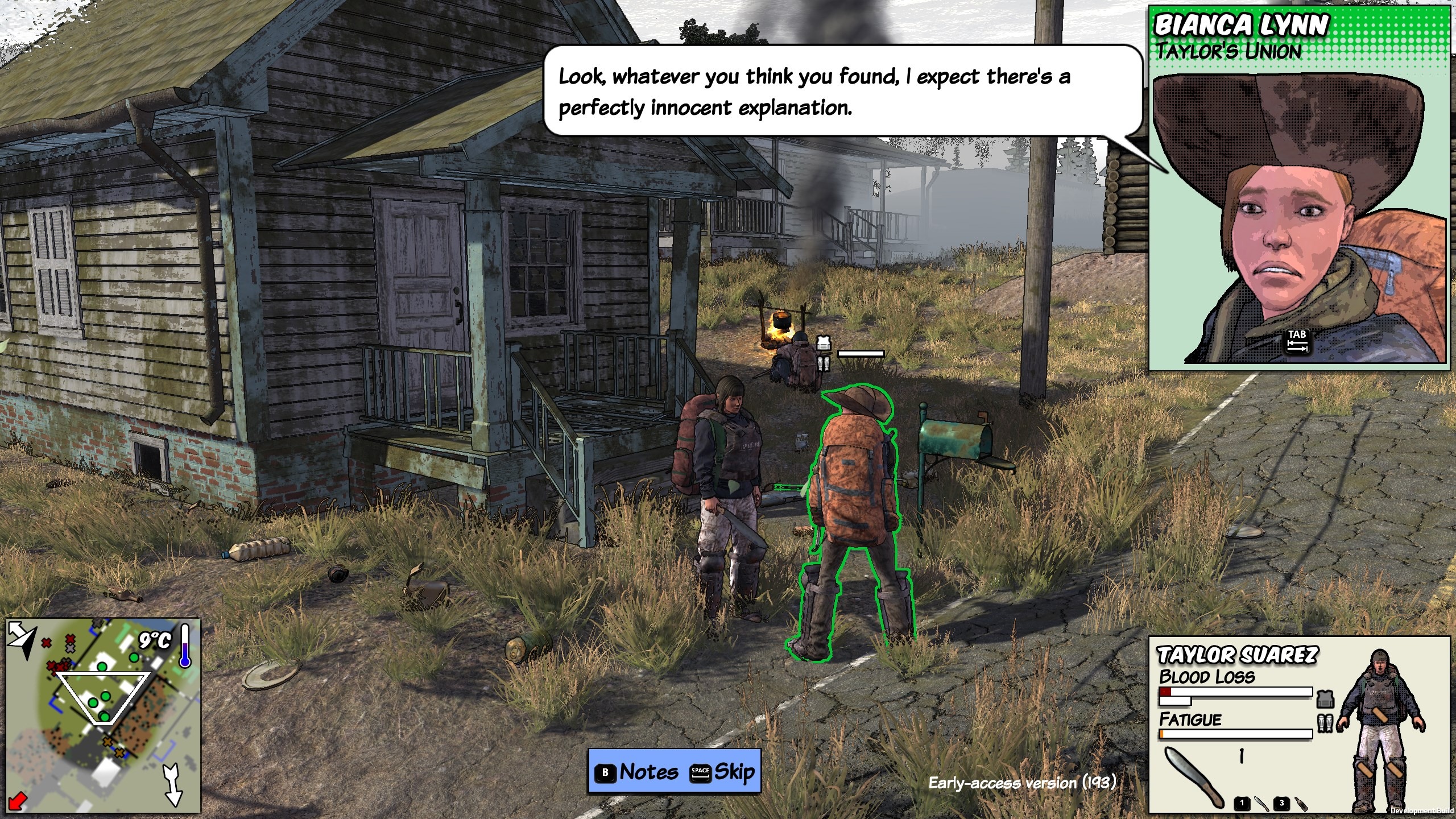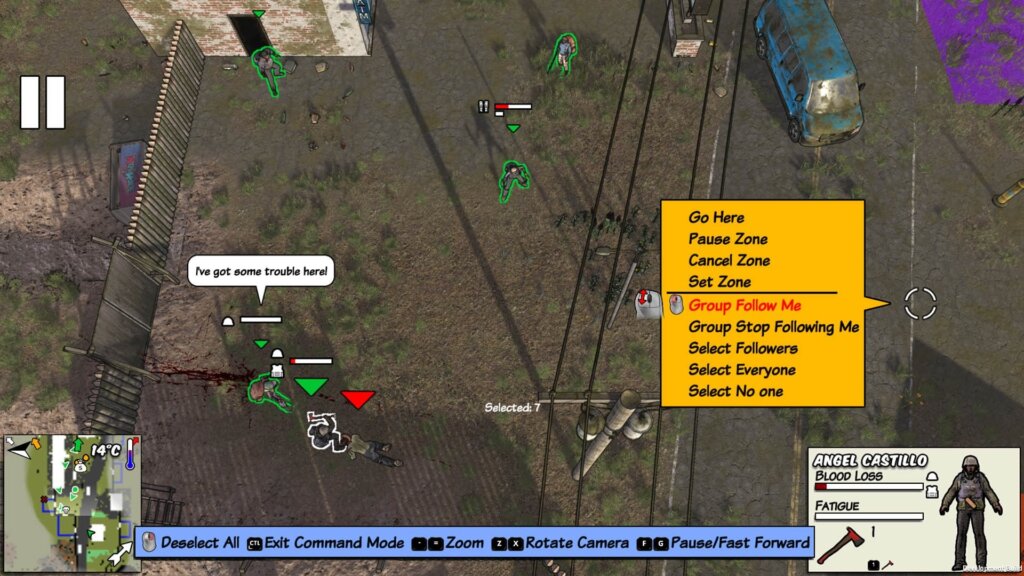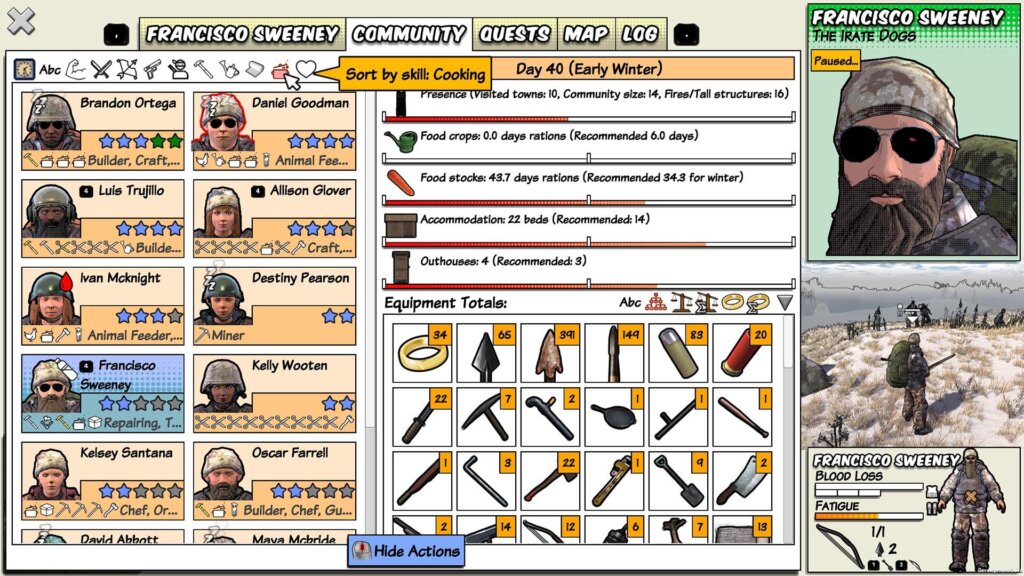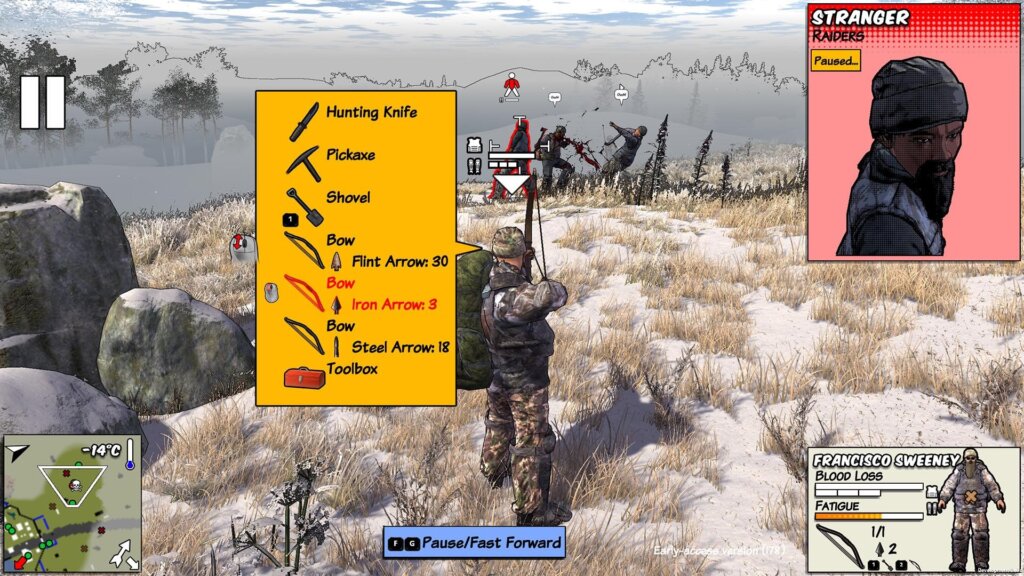Survivalist: Invisible Strain Review: A Comic-Book Zombie Sandbox
Survivalist: Invisible Strain feels like the kind of game that thrives on systems rather than spectacle. Playing it on Xbox Series X, you quickly see how it could sit comfortably alongside the State of Decay series while still carving its own identity. It is an ambitious zombie survival sim that pairs a comic-book visual style with an open-ended world full of danger, discovery, and difficult choices. When it works, it can be deeply engaging. When it stumbles, it can be frustrating enough to test your patience.

The first thing you notice is the art style. The game’s cel-shaded, comic-book look gives it a distinct personality in a genre often dominated by grim realism. It is colorful without losing the oppressive atmosphere of a world overrun by the undead. The bold outlines and exaggerated animations make it easy to read situations from a distance, and the style holds up well across different environments. It is a visual choice that makes the game memorable, even if it is not technically pushing the Series X hardware to its limits.
Where Invisible Strain really shines is in its sense of discovery. The map is vast, and exploring it is a rewarding process. You will come across abandoned buildings, hidden camps, and roaming factions with their own goals and grudges. Each encounter feels like it could go in multiple directions. Will this group trade with you, ignore you, or attack on sight? The uncertainty makes each interaction tense.
The game also offers a lot of freedom in how you approach survival. You can focus on scavenging and diplomacy, or you can put your energy into constructing a home base and making it self-sufficient. Base building is functional and offers plenty of options, from fortifying walls to setting up farming plots. It is satisfying to watch a safe zone grow over time, especially if you start from nothing.
Engaging with the game’s factions adds another layer of depth. NPCs have personalities, memories, and shifting allegiances. If you anger someone, they might hold it against you later. If you help them, they may return the favor in a time of need. These social dynamics make the world feel alive and reactive, and they encourage you to think before acting.
One of the most unique aspects of Survivalist: Invisible Strain is how it treats infection as a layered threat rather than a one-size-fits-all condition. The world is home to multiple strains, each with its own danger level and cure window. Green strain is the most forgiving, giving you days to administer an antigen, while blue and red strains dramatically shorten that window to hours or even minutes. White strain is essentially a death sentence, killing its host in seconds with no cure. Then there is the game’s namesake, the Invisible Strain, which hides in plain sight. Infected individuals show no symptoms until they suddenly turn, making it a devastating weapon in both PvE survival and faction diplomacy. These varied strains keep you on edge, forcing you to adapt your medical stockpile, quarantine protocols, and even how you interact with strangers, since anyone could be the source of your settlement’s downfall.
Unfortunately, the game’s ambition is undercut by its difficulty and some clunky mechanics. Even on lower settings, Invisible Strain can be punishing. Zombies are not to be trifled with in large numbers, which makes sense, but resources are scarce, combat can be unforgiving, and it is easy to lose progress from a single mistake. While that challenge will appeal to hardcore survival fans, it risks alienating players who want a slightly gentler learning curve.



The controls are another sticking point. Movement can feel stiff, and there is an awkwardness to managing friendly characters. Assigning roles like building, farming, or defending should be smooth and intuitive, but instead it feels cumbersome. You may spend more time wrestling with menus and AI behavior than actually enjoying the results of your commands. NPC pathfinding can be unreliable, with allies sometimes standing idle or wandering off rather than completing assigned tasks. In one instance, our AI partner kept leaping over a fence back and forth, as if they were unable to decide which way they wanted to go.
There is also a certain repetitiveness to the mid-game once you get past the initial scramble for survival. While exploration and faction dynamics add variety, the core loop of scavenging, crafting, and defending can start to feel familiar. That said, the richness of the world means you can still stumble upon unexpected situations that pull you back in.
Despite its flaws, Survivalist: Invisible Strain offers a unique take on zombie survival. It is not as polished as bigger-budget games, but it compensates with depth, personality, and a world that rewards curiosity. If you can get past the steep learning curve and the clunky control scheme, there is a lot to appreciate here. For players who enjoy the State of Decay series and want something in the same vein but with a more system-driven, sandbox approach, this is worth a look. Just be prepared for some rough edges and a game that demands patience as much as skill.
RATING: 3.0 out of 5.
Survivalist: Invisible Strain is available for PC, and Xbox Series S/X.



 OpenCritic
OpenCritic
I’ve been playing this for a few weeks now and it’s surprisingly deep. The mix of survival and story elements keeps me coming back. The comic-book style is a nice touch too.
I’ve been playing this one for a few weeks now and it’s surprisingly deep. The comic-style look took a bit to get used to, but the survival mechanics are solid and the world feels alive.